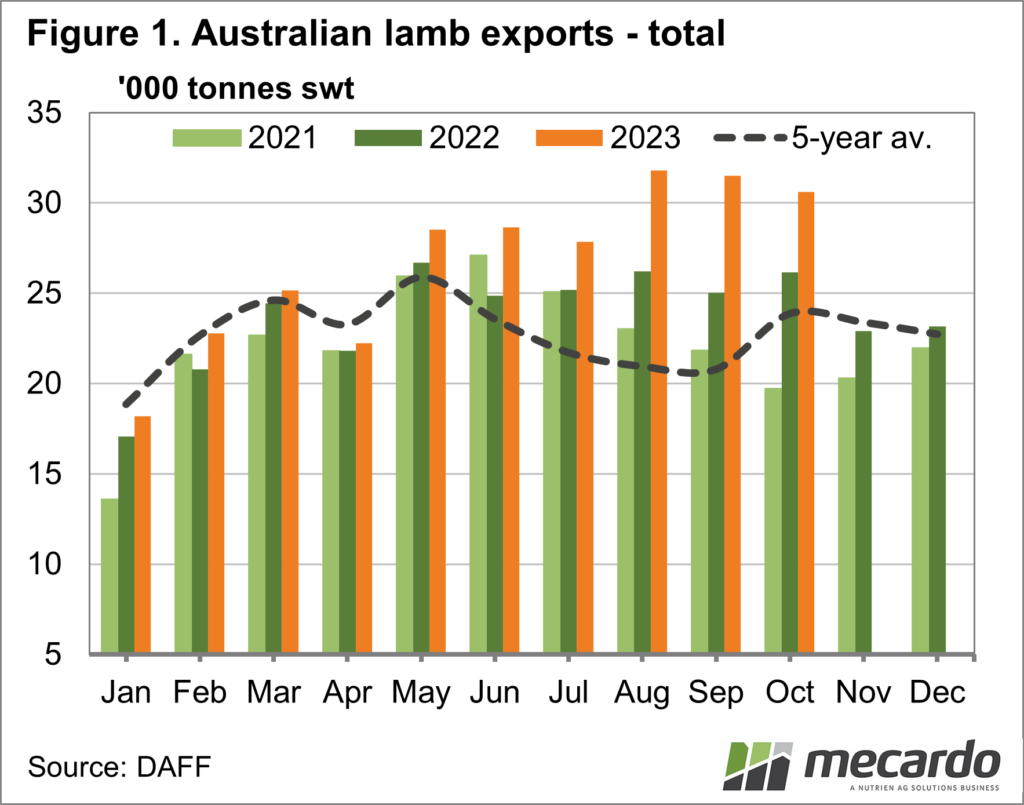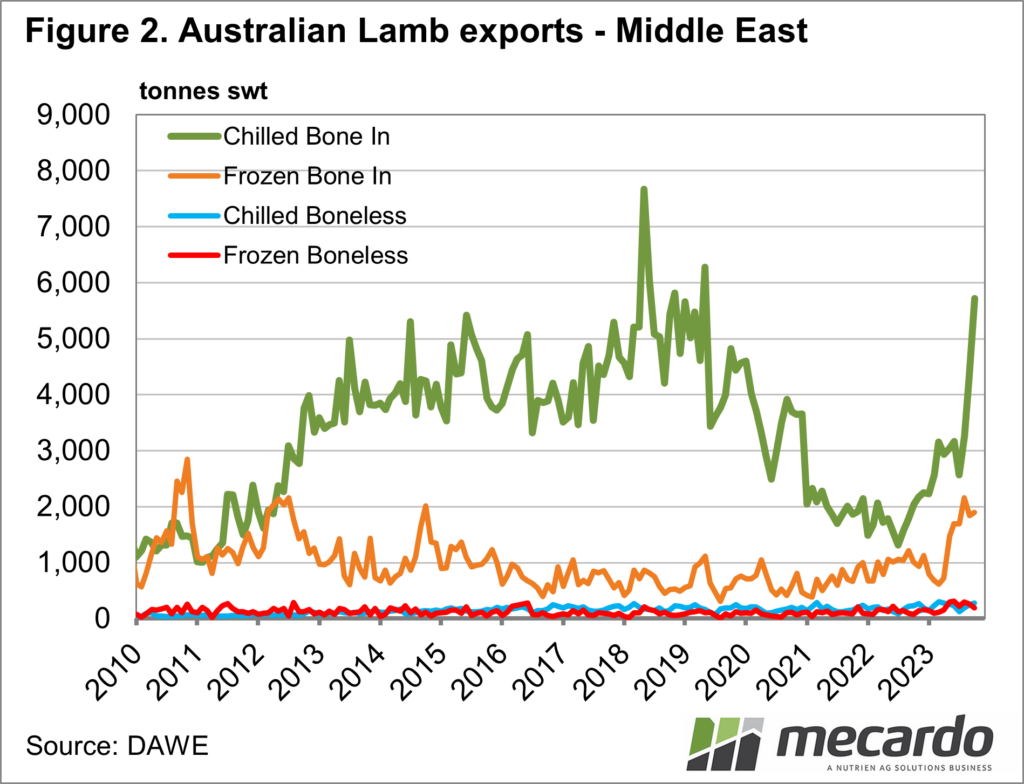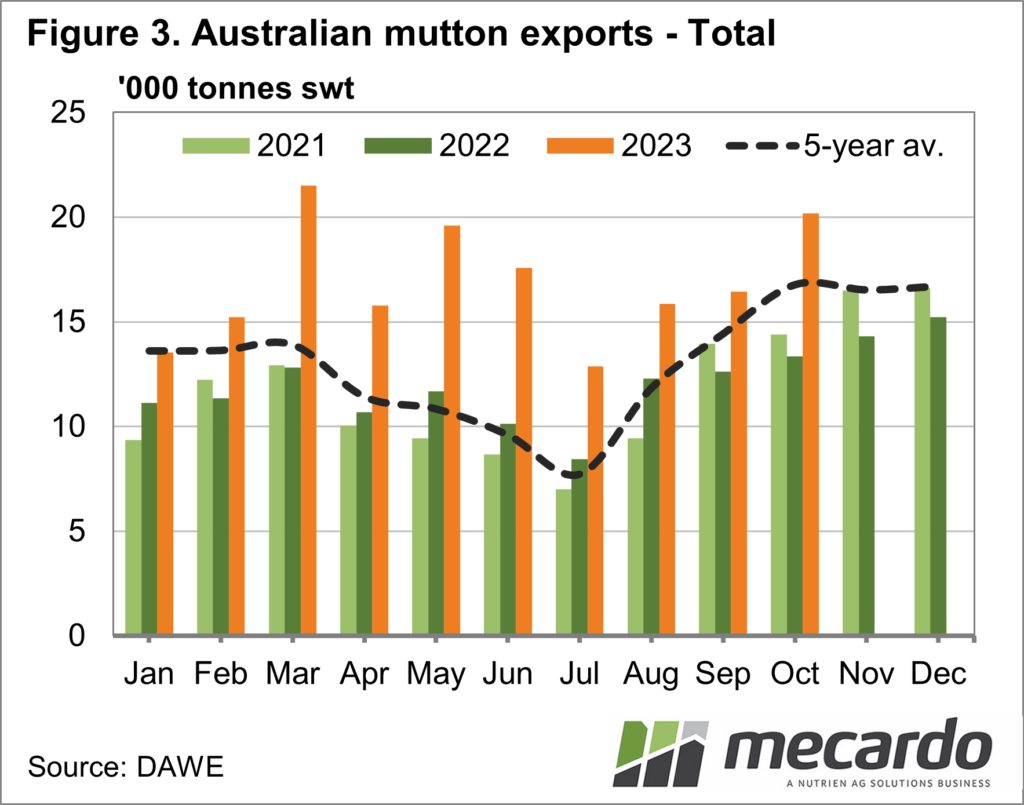While prices for lambs aren’t great, and mutton is still depressed, the good news is that at least the heavy lamb production from strong slaughter rates is still finding a home in export markets. More lamb is finding a home in the Middle East, which is good for prices down the track.
Here are a few key stats from the export data released last week. October lamb exports were down 3% on September, but up 17% on the same month last year (Figure 1). In the 10 months to date, more lamb has been exported than in all of 2020 and 2021, and we are on track to export over 320,000 tonnes. This would represent a 13% increase on last year’s record volumes.
The shift in lamb export destinations continues at pace. Exports to the Middle East jumped higher again, to over 8,000 tonnes swt, the highest on record. This saw the Middle East surpass the US as our second-largest market, sitting just behind Asia in October.
The US market remains relatively quiet, they took 18% less lamb than both September and October last year.
The number of ‘bag lambs’ exported to the Middle East continued to increase in October. The data to make a rough estimate of bag lamb exports can be found by filtering the Meat and Livestock Australia (MLA) export data.
Figure 2 shows the massive jump in Chilled Bone-In lamb exports to the Middle East in October. For the last three months, exports to the Middle East have been up 10,889 tonnes. Frozen Bone-In exports are also much stronger.
We can use this data to do some very rough numbers on lambs that have gone to the Middle East, which last year might have been grown out to heavier weights. Lambs exported to the Middle East are generally at the lighter end, but it’s hard to know the average weight.
If we say 20kg cwt or 17kg swt, there have been over 650,000 more lambs exported to the Middle East in the last three months compared to 2022.
For mutton, export volumes are positive, but it is likely driven by the extremely cheap pricing. Figure 3 shows a strong jump in mutton exports in October, to the second highest level for the year thus far.
What does it mean?
For those holding lambs, it’s heartening to see a lot more lighter lambs heading to the Middle East. The high-value market in the US remains a concern in terms of how much processors will be able to pay for heavier lambs in the New Year.
On the mutton front producers can hope that consumers are getting their taste for mutton back, and will be happy to pay more for it.
Have any questions or comments?
Key Points
- Lamb exports will easily hit a record this year, surpassing 300,000 tonnes.
- Exports to the Middle East jumped markedly in October.
- More light lambs exiting the system is positive for medium-term pricing.
Click on figure to expand
Click on figure to expand
Click on figure to expand
Data sources: MLA, DAFF, Mecardo















